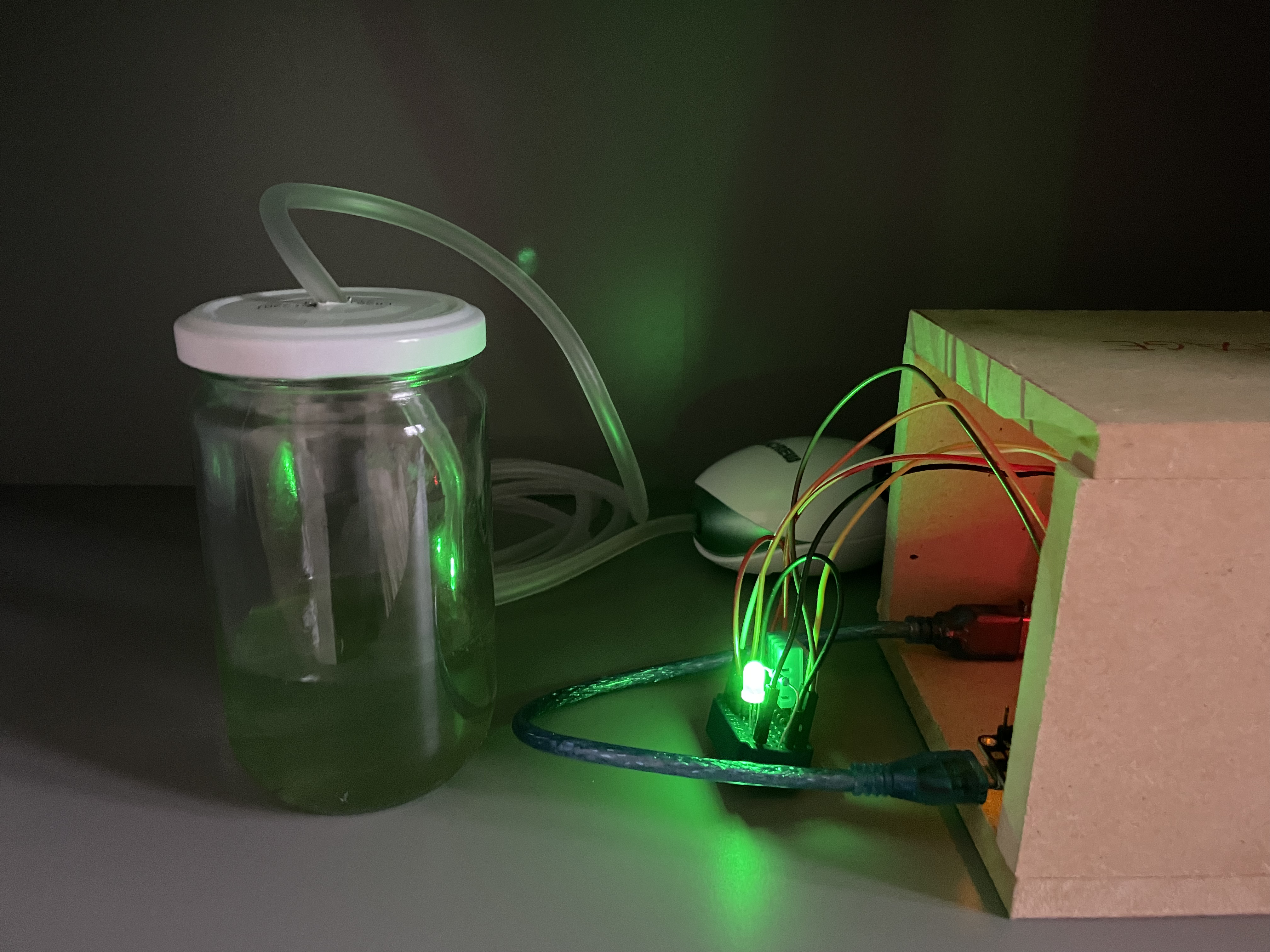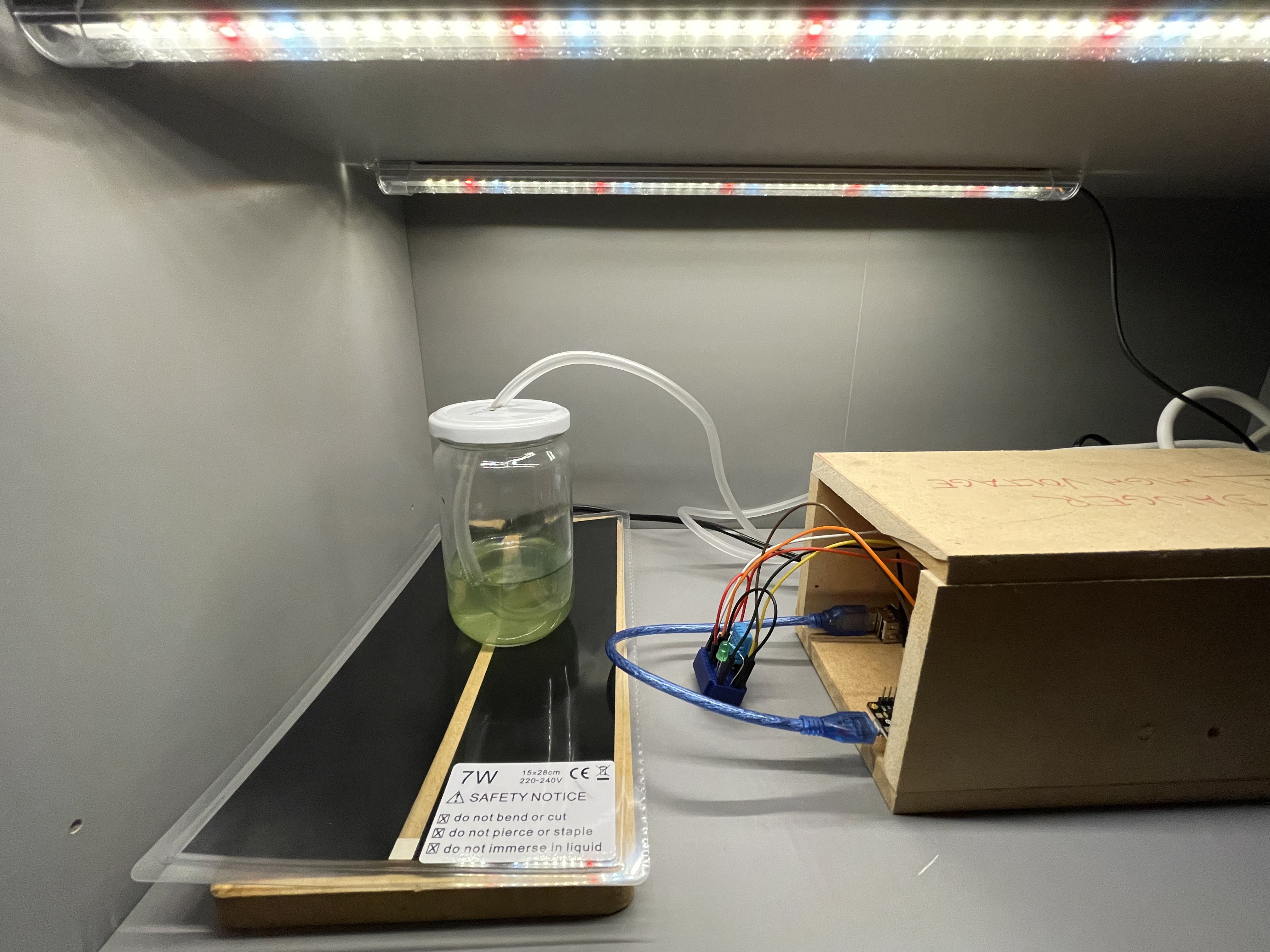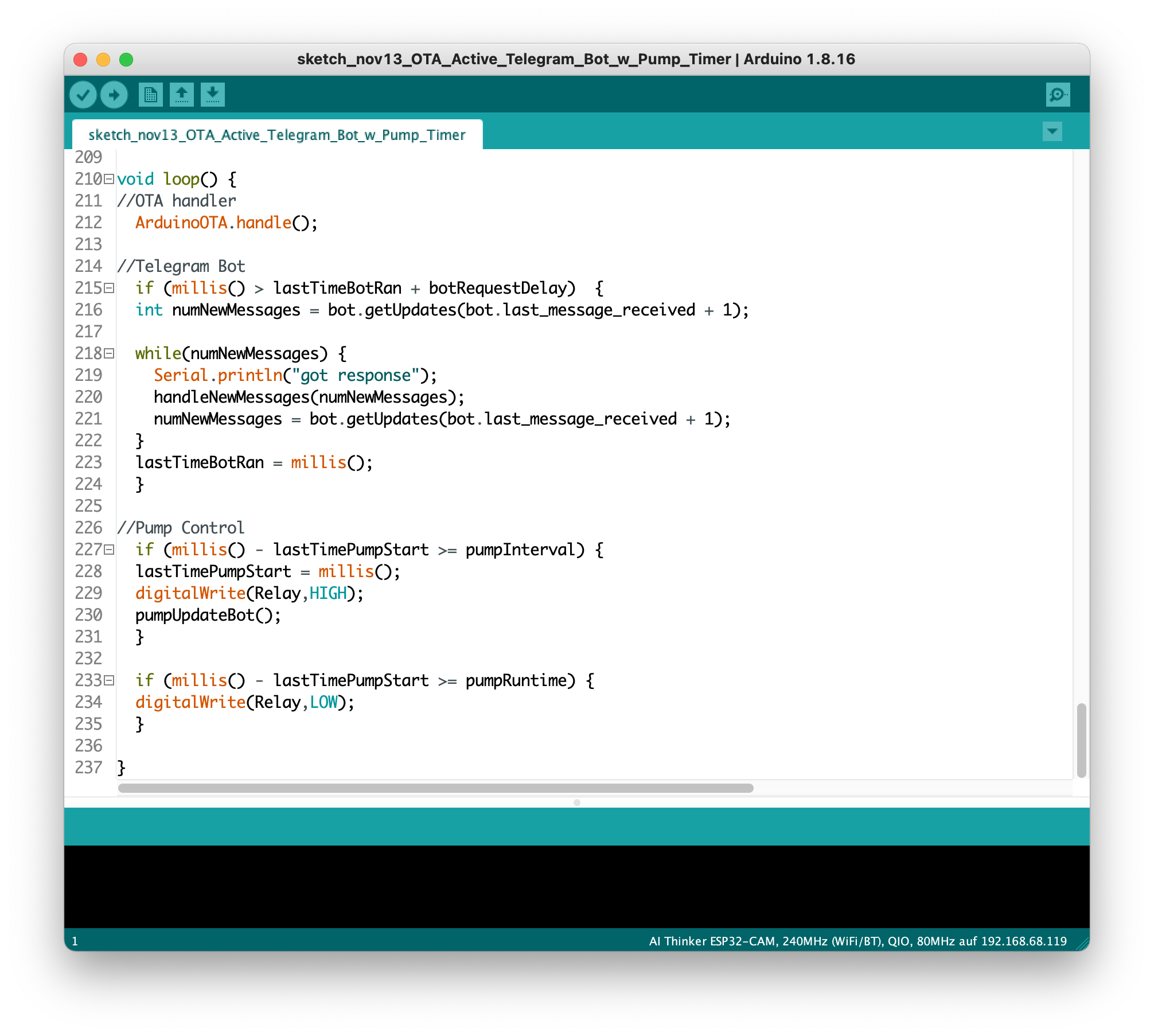Introduction
Ever since Nuria Conde introduced us to Spirulina (Arthrospira platensis) algae and its unique nutritional properties, I have been fascinated by the possibilities of this easy-to-farm algae. Among many of its advantages, it yields 20 times more protein per acre than an other commonly grown crops such as corn while using ten times less water to produce it – so the potential for this as a sustainable future food is immense. This however requires to popularize the algae strain and to give even small households of four people a way of growing and harvesting it. That's why I decided to begin experimenting with small-scale automated Spirulina farming.
Building the MVP
With this ongoing project, I was aiming to build a complete sensor suite, monitoring the most crucial growth conditions (light, temperature, aeration), and a microcontroller, regulating these conditions and recording the data into a web-based dashboard. The minimal viable product (short: MVP) would be an implementation of all these things, albeit on a low-tech level. This effort resulted in the first iteration of my Spirulina farming setup, which can be found below. The long-term goal is to open source not only the codebase (found below), but the hardware construction as well, for anyone to copy and build themselves.

One of the earliest setups.

The MVP of the Spirulina farm, built into a shelf in my room.
Materials Used
Above, you can see the MVP version of the setup, currently running 24/7. It features a time-controlled air pump, high-powered LED-lights, and heating pad, as well as a temperature sensor and a LED for displaying system status. In the wooden box, there is a relay, controlling the pump 220V output, as well as a ESP32 microcontroller and it's USB 5V power supply. The parts used so far are:
- Adafruit Feather ESP32
- DH11 Temperature Sensor
- USB Charger
- LED + Resistor
- Single-Channel Relay
- High-powered LED Strips
- Heating Pad
- Aquarium Pump
- A Glass Jar
- Plywood
Writing the Code
The code itself is a product of many individual small experiments I did over the past eight months. It features a Telegram Bot integration for communicating (both actively and reactively) system status, over-the-air update capabilities and (cooperative) multitasking when executing its functions. The code is made public on Github to work towards a true open-source project.

A screenshot of the code. The full code can be found on Github.
Project Planning
In order for the project to be presentable for the first term presentation on December 21st, these necessary steps have to be taken: Build the first iteration of the dedicated and integrated hardware, open-source both hardware and software (as well as providing instructions alongside of it), 3D-design and -print the second iteration of the dedicated hardware for the presentation and finally, built the exhibition stand for the design dialogues event. Below, a timeline of the intersecting tasks necessary to meet the deadline can be found.

A timeline showing the steps until December 21st.
